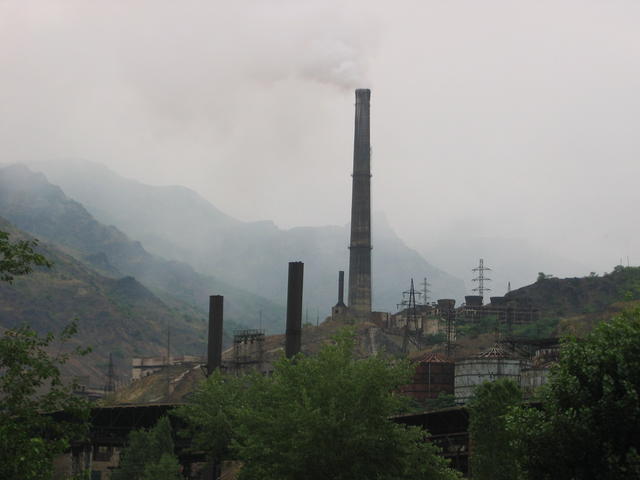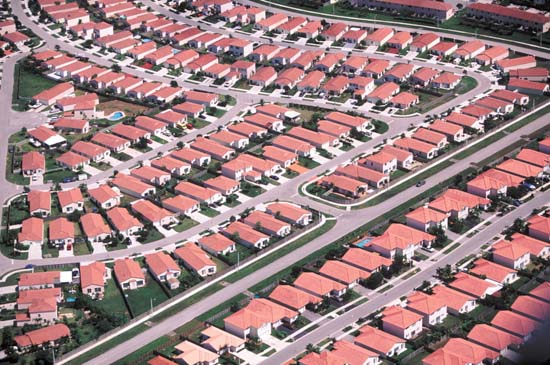Overpopulation has been an issue for humans all of our evolutionary existence. Humans in the primitive days, when subsistence meant hunting and gathering, depended upon keeping the ecosystem in balance. By keeping numbers small, bands of human beings were able to live on what the land provided; moving on when resources became scarce. As humans adapted the technology of agriculture, and more was able to be harvested without moving locations, numbers began to grow and civilizations were formed. The balancing act of reaping as much as what is possible from the land while not over tipping nature’s scale has been at the core of humanity’s survival. From the start of the Industrial Revolution to the present, humanity has cared little about the negative effects of this process mean to the Earth; however, pollution has final begun to be our own undoing. With various tech-fixes over the millennia humans have been able to overcome many environmental challenges and hurdles. In the near future, humanity may reach such a breaking point where there is no tech fix to reverse or improve the effects of the pollution created as the cost of human expansion.
When there were few humans on the planet, and boundless amounts of land and resources to be explored and had, destroying one ecosystem meant nothing when there was another waiting, just beyond the horizon. The example of Easter Island presents itself as such a case. By deforesting the island, the peoples of the Rapanui had the opportunity to simply abandon their small island and their unsustainable practices and find new land. Unfortunately, the Rapanui would be hard-pressed to take advantage of such an opportunity today. As of July 2008, there are 6,677,563,921 people in the world (https://www.cia.gov/library/publications/the-world-factbook/geos/xx.html#People). This ever-growing population stretches over 250,000 km of nonexpanding land. In fact, this land mass is threatened to shrink as global warming increases thus causing the polar ice caps to melt at an alarming rate and flood heavily populated coast lines. There is a limited amount of land on the globe and humanity is just beginning to understand how high the cost is of loosing or tainting just a precious, small part of it.

Industrialization has brought many comforts to humans. Large factories that spew toxic fumes into the air pump out products and creature comforts that humans have become adapted to use in every-day life; everything from, and in-between, deodorant, to notebooks, to bicycles. These large factories, found all over the world, are also a major source of air pollution. The high demand created by capitalism for these goods has lead to a necessity for them to spring up. The high numbers of humans that are accustomed to using these goods increases every year. As population increases, so does the demand for the products and the numbers of factories and power plants needed to power their activities. In addition to these factories, massive power plants, that generate energy for our nation, are also culprits of heavy pollution. Many of these power plants are coal dependent, thus causing “C oal-fired plants [to] produce 56 percent of the nation’s electricity”. This dependency is detrimental because “Coal produces approximately two times the amount of carbon dioxide as natural gas, and a third more CO2 per unit of heat than oil” (http://healthandenergy.com/coal.htm). The dependency of these power plants on coal means bad news for our overall air quality. Until a cleaner means of fuel is found, the increasing demand for power that an already over-populated, albeit growing, world demands will mean increased air pollution.
The increased urban sprawl building trend has lead to the sprouting of large residential neighborhoods far away from urban centers as individuals seek homes away from troubles (pollution, crime, bad schools, etc) that plague the urban city centers. These individuals often commute long hours to and from their place of employment in automobiles. The large numbers of automobiles that clog the highways and interstates, many below emission standards often emitting more harmful gasses than federally mandated, contribute to the air pollution. Although measures such as the implementation of the car pool lane, or high occupancy vehicle lane, first introduced in California in the 1970s, has been taken in many states, there are still high numbers of “one person cars” as many individuals would rather drive solo than take public transportation or carpool (http://en.wikipedia.org/wiki/High_occupancy_vehicle_lane).

Even though hybrid cars are newly developed and engineered, they are often not an affordable substitute for many families in the United States. Hybrids, other new technologies, and tougher emissions standards are definitely the future for reducing pollution emitted from automobiles. However, the real future should be envisioned with public transportation in mind. With large amounts of population spread throughout the country, trains, busses, subways, etc. should be used to connect suburban areas with urban centers. Many large cities on the east coast have utilized public transportation systems. New York, Philadelphia, and Boston – all have extensive public transportation systems. The west coast however, can not boast the same feat. More money needs to be invested in public transportation today. With more advanced and cheaper public transportation systems, people might be willing to forgo their solo and stressful commute everyday. With a world that is overpopulated, this switch has the potential to reduce the emissions that are present today from overcrowded highways and freeways.
A large population also requires a large amount of food. The United States has, for most of history, been the bread basket of the rest of the world. The Midwest exports grain to the rest of the world. In 2003, Minnesota alone exported an estimated amount of 9.5 million tons of grain (http://www.hometownsource.com/capitol/2003/August/29downriver.html). As the Midwest continues to farm at such a high rate, the rate at which the soil’s nutrients are being depleted also increases. The need for fertilizers and other chemicals to fix this problem is a short tech fix to extend the fertility of the region. The demand for food continues to rise as population levels increase. This demand has lead to the destruction of much of the world’s natural habitat. Brazil’s rainforest is being cut-down at a rapid rate; ranchers need for space to raise their cattle, China needs soil to grow soybeans, amongst other causes. Earth’s lands are not the only regions that are being over-exploited in the name of feeding an overpopulated people. The oceans continue to be over fished. Fish species can’t sustain numbers to reproduce because of this problem. Other ocean dwellers are affected by this situation when other members of the food web are significantly reduced or eliminated all together. The need to feed such a large amount of humans comes before the need to balance the system from which we are extracting nutrients from.

The effects of overpopulation and industrialization on the Earth have been harmful in numerous ways. The creature comforts that humans have evolved to need over time till the present require vast amounts of power and energy to produce. The source of this energy is primary coal, which is a key contributor to speeding up global warming. The move away from urban centers, in effort to find better places to live, has caused numerous mounts of individuals the need to commute. Often this commute is done alone. Hybrid cars are a tech fix to allow individuals to still commute, not have to pay such high gas prices, and not pollute as much. Even with such technologies, efforts to promote public transportation are greatly needed. Public transportation would remove many drivers from the roads and much of the resulting pollution from the air. Feeding such a population is also quite a difficult task. Many natural resources, such as Brazil’s rainforest, have been greatly harmed in efforts to reap more from the soil at the lowest prices possible. These are a few of the effects of overpopulation. There are many more that humanity is not yet fully aware of, or can even comprehend.